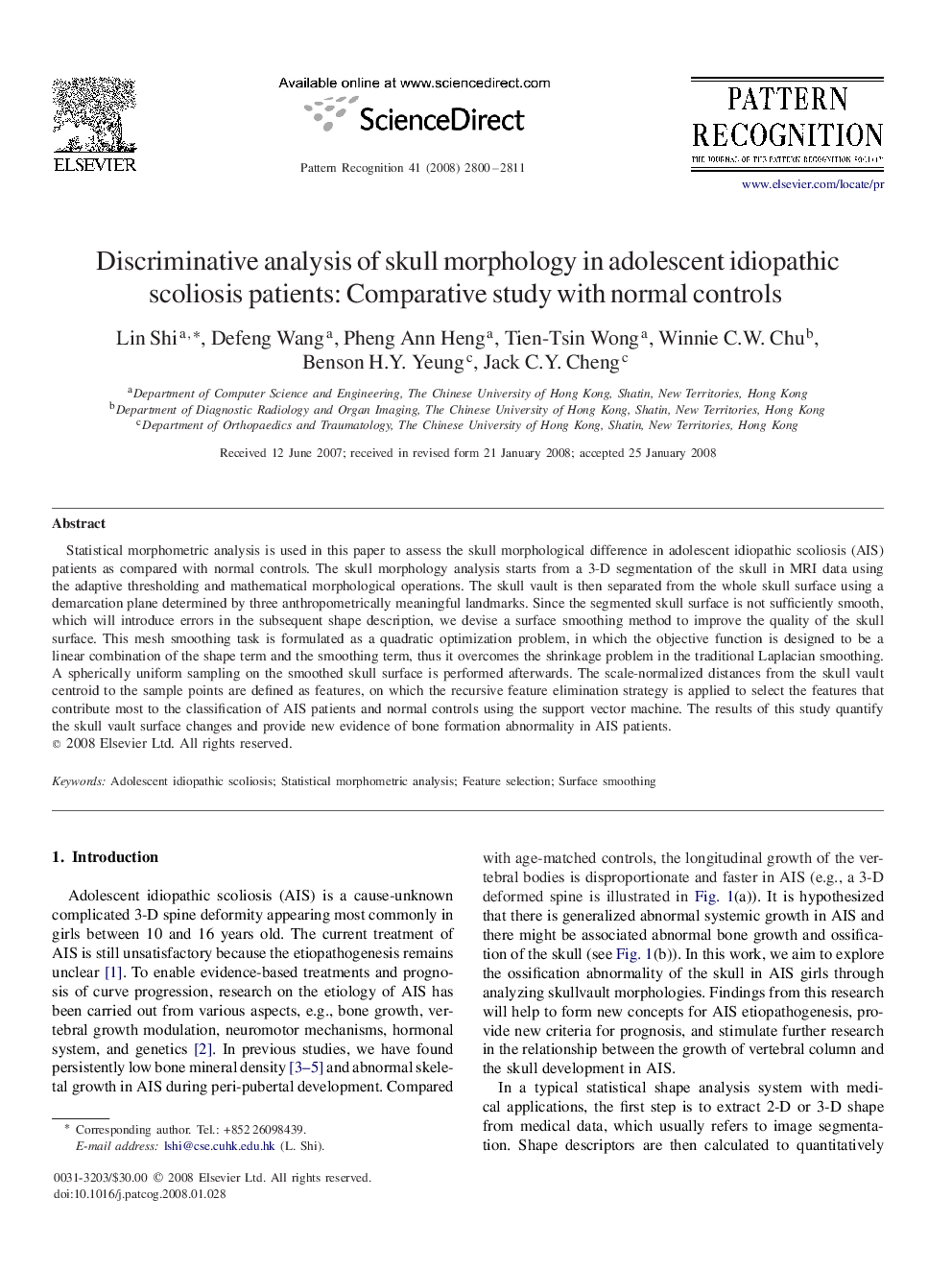| Article ID | Journal | Published Year | Pages | File Type |
|---|---|---|---|---|
| 531433 | Pattern Recognition | 2008 | 12 Pages |
Statistical morphometric analysis is used in this paper to assess the skull morphological difference in adolescent idiopathic scoliosis (AIS) patients as compared with normal controls. The skull morphology analysis starts from a 3-D segmentation of the skull in MRI data using the adaptive thresholding and mathematical morphological operations. The skull vault is then separated from the whole skull surface using a demarcation plane determined by three anthropometrically meaningful landmarks. Since the segmented skull surface is not sufficiently smooth, which will introduce errors in the subsequent shape description, we devise a surface smoothing method to improve the quality of the skull surface. This mesh smoothing task is formulated as a quadratic optimization problem, in which the objective function is designed to be a linear combination of the shape term and the smoothing term, thus it overcomes the shrinkage problem in the traditional Laplacian smoothing. A spherically uniform sampling on the smoothed skull surface is performed afterwards. The scale-normalized distances from the skull vault centroid to the sample points are defined as features, on which the recursive feature elimination strategy is applied to select the features that contribute most to the classification of AIS patients and normal controls using the support vector machine. The results of this study quantify the skull vault surface changes and provide new evidence of bone formation abnormality in AIS patients.
